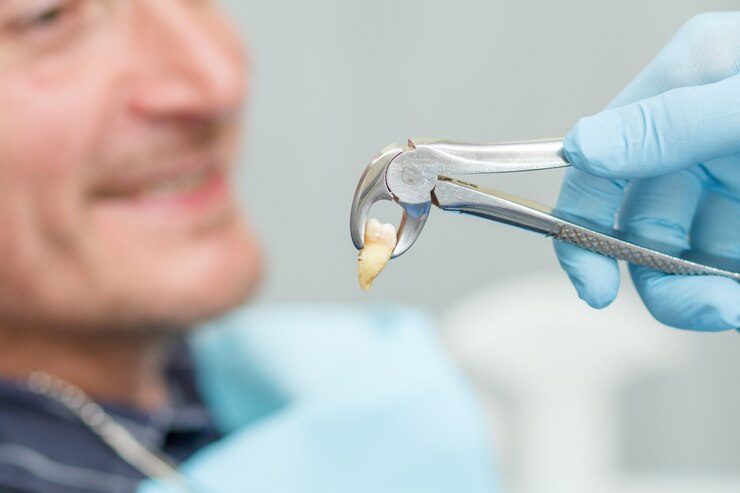Wisdom teeth, often referred to as third molars, usually emerge in late adolescence or early adulthood. While some people experience no issues with their wisdom teeth, many others face complications that necessitate emergency wisdom tooth removal. Understanding the signs that indicate a problem, the steps to take in an emergency, and what to expect during the removal process can help alleviate anxiety and ensure you receive the care you need.
1. Recognizing the Signs of a Problem
Before diving into what to do in an emergency, it’s crucial to recognize the symptoms that signify potential issues with wisdom teeth.
Common signs that may indicate the need for emergency removal include:
- Pain or Discomfort: Persistent pain in the back of the mouth that may radiate to other areas can indicate that a wisdom tooth is impacted or infected.
- Swelling and Inflammation: If the gums around your wisdom teeth are swollen or inflamed, it could suggest an infection or that the tooth is trying to emerge improperly.
- Difficulty Opening Your Mouth: If you find it painful or difficult to open your mouth fully, this can signal a problem with your wisdom teeth.
- Foul Taste or Odor: An unpleasant taste or odor in your mouth can indicate an infection, often associated with impacted wisdom teeth.
- Headaches or Ear Pain: Sometimes, issues with wisdom teeth can manifest as headaches or pain in the ears due to referred pain.
If you experience any of these symptoms, especially severe pain or swelling, it’s essential to seek dental care promptly.
2. What to Do in an Emergency
If you suspect that you need emergency wisdom tooth removal, follow these steps to ensure you receive the appropriate care:
Stay Calm
Experiencing dental pain can be overwhelming, but staying calm is essential. Panic can exacerbate your discomfort and make it more difficult to think clearly about the next steps.
Contact Your Dentist
Reach out to your dentist or a local dental practice as soon as possible. Explain your symptoms and the urgency of your situation. Many dental offices reserve time for emergency cases, and they can advise you on the next steps.
Manage Pain and Discomfort
While waiting for your appointment, you can manage your pain with over-the-counter pain relievers such as ibuprofen or acetaminophen. Follow the dosage instructions on the packaging. Additionally, applying a cold compress to the outside of your cheek can help reduce swelling and alleviate pain.
Avoid Certain Foods
Eat soft foods and stay away from hard, crunchy, or sticky foods that might aggravate the area around your wisdom teeth. Staying hydrated is essential, but be cautious with hot beverages, as they may worsen inflammation.
Prepare for Your Appointment
When you visit your dentist, be sure to provide them with a complete medical history, including any medications you are currently taking. This information is crucial for your dentist to determine the best course of action.
3. The Emergency Wisdom Tooth Removal Process
Once you arrive at the dental office, the dentist will perform a comprehensive examination, which may include X-rays, to assess the position of your wisdom teeth and determine the best removal approach. Here’s what to expect during the procedure:
Anesthesia Options
Emergency wisdom tooth removal is typically performed under local anesthesia, which numbs the area around the tooth. In some cases, sedation options may also be available to help you feel more comfortable during the procedure. Your dentist will discuss these options with you based on your comfort level and the complexity of the extraction.
The Extraction
During the procedure, the dentist will carefully remove the wisdom tooth. If the tooth is impacted (meaning it hasn’t fully erupted through the gums), the dentist may need to make an incision in the gum tissue to access it. This process may take anywhere from 20 minutes to an hour, depending on the complexity of the extraction.
Post-Operative Care
After the extraction, your dentist will provide you with specific post-operative care instructions, which may include:
- Managing Bleeding: Bite down gently on gauze placed over the extraction site to help control bleeding.
- Pain Management: Continue taking pain relievers as recommended and apply ice packs to reduce swelling.
- Dietary Recommendations: Stick to soft foods for the first few days and avoid using straws, as suction can dislodge the blood clot forming in the extraction site.
- Hygiene: Maintain oral hygiene but avoid brushing the extraction site for the first 24 hours. Rinse your mouth gently with warm salt water after the first day to promote healing.
4. When to Seek Further Help
While most wisdom tooth extractions go smoothly, it’s crucial to monitor your healing process. Contact your dentist if you experience:
- Severe or Increasing Pain: While some discomfort is normal, severe pain that worsens may indicate complications.
- Prolonged Bleeding: If bleeding continues for more than a few hours after the extraction, seek dental assistance.
- Signs of Infection: Symptoms such as fever, increased swelling, or pus coming from the extraction site should be addressed immediately.
5. The Importance of Follow-Up Care
After your emergency wisdom tooth removal, attending any scheduled follow-up appointments is vital. Your dentist will monitor your healing progress and ensure that there are no complications. Regular check-ups can help catch potential issues early and ensure that your mouth is healing properly.
Conclusion
Experiencing issues with your wisdom teeth can be painful and daunting, but knowing what to do can make the process smoother. Recognizing the signs of complications, seeking prompt care, and understanding what to expect during emergency wisdom tooth removal can help alleviate anxiety and ensure you receive the best possible treatment.
If you find yourself in need of emergency dental care, consider reaching out to Laguna Niguel Smiles Dentistry. With a commitment to patient comfort and advanced dental care, this practice is ready to assist you in regaining your oral health.





Comments